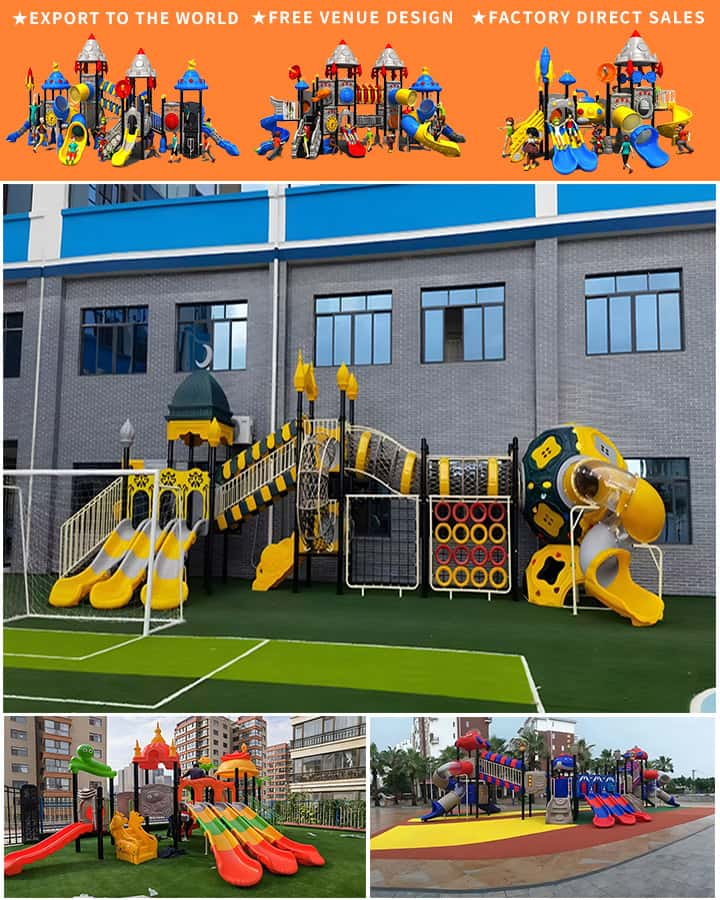Preschool children are at a crucial stage of their development, where they learn to explore the world around them and develop essential motor skills, social interactions, and cognitive abilities. One of the best ways to nurture these young minds is through engaging outdoor playground equipment designed specifically for preschoolers. This article delves into the significance of outdoor playground equipment in early childhood development and explores various types of equipment that can benefit preschool-aged children.
The Importance of Outdoor Play
Outdoor play is more than just a fun activity; it plays a pivotal role in the overall growth and development of preschool-aged children. Exposure to fresh air, physical activity, and social interaction fosters physical health, boosts creativity, and enhances emotional well-being. According to numerous studies, children who engage in regular outdoor play tend to exhibit better concentration levels, improved academic performance, and reduced stress levels.
Key Features of Outdoor Playground Equipment for Preschoolers
When selecting outdoor playground equipment for preschool, safety and age-appropriateness are paramount. Equipment designed for this age group typically features:
- Soft Surfaces or Safety Surfacing: To cushion falls and prevent injuries.
- Rounded Edges and Corners: To minimize the risk of cuts and scrapes.
- Age-Appropriate Heights and Challenge Levels: To ensure accessibility and enjoyment without overwhelming young children.
- Durability and Weather Resistance: To withstand heavy use and varying weather conditions.
Types of Outdoor Playground Equipment Beneficial for Preschoolers

1. Slides
Slides are a timeless favorite among preschoolers. They help develop balance, coordination, and spatial awareness while providing an enjoyable experience. Choose slides with gentle slopes and secure handrails to ensure safe usage.
2. Climbing Structures
Climbing structures like small climbing walls or play structures with ladders and stepping stones encourage children to develop their gross motor skills and build strength. These activities also promote problem-solving abilities as children figure out how to navigate these structures safely.
3. Swings
Swings are excellent for developing vestibular sense (the sense of balance and movement). Traditional swings, bucket swings, and gliders cater to different preferences and developmental stages within the preschool age range.
4. Merry-Go-Rounds and Spinning Platforms
These pieces of equipment provide fun while enhancing balance and coordination. Merry-go-rounds and spinning platforms challenge children to maintain their equilibrium, which is critical for overall physical development.
5. Interactive Panels and Sensory Equipment
Interactive panels with musical buttons, spinning gears, or textured surfaces stimulate tactile and auditory senses, contributing to sensory processing development. These elements encourage curiosity and imaginative play.
6. Sandbox with Lid
A sandbox allows children to explore their creativity through digging, building, and pretend play. It also provides opportunities for sensory experiences with sand, water, and small toys. A lid helps keep the area clean and free from debris when not in use.
Benefits of Outdoor Playground Equipment
The incorporation of well-designed outdoor playground equipment offers numerous benefits for preschool children:
- Physical Development: Enhances motor skills, strength, and coordination.
- Social Skills: Encourages teamwork, sharing, and communication during playdates.
- Emotional Well-being: Provides a sense of freedom, reduces stress, and boosts self-esteem.
- Cognitive Growth: Stimulates imagination, creativity, and problem-solving abilities.
- Nature Connection: Instills an appreciation for the outdoors and environmental stewardship.
Conclusion
Investing in high-quality outdoor playground equipment tailored for preschool children is vital for nurturing their physical, social, and cognitive development. By providing safe and stimulating play environments, caregivers and educators can support the holistic growth of young learners. As children climb, slide, swing, and explore, they lay down the foundations for a healthy and well-rounded future.




